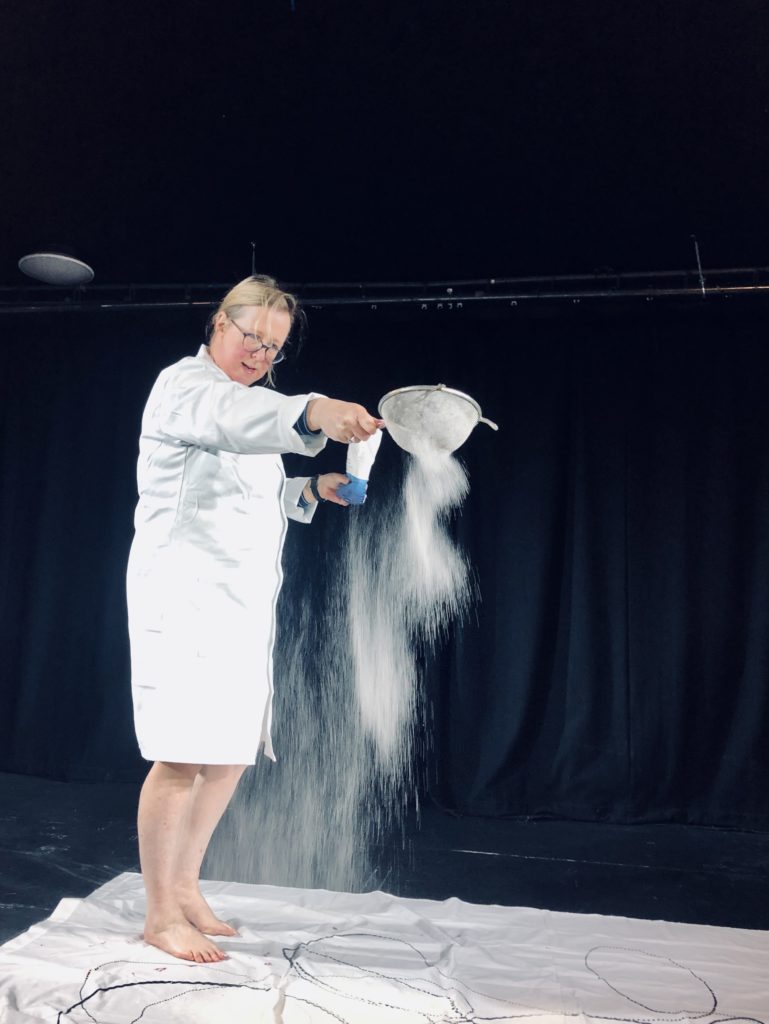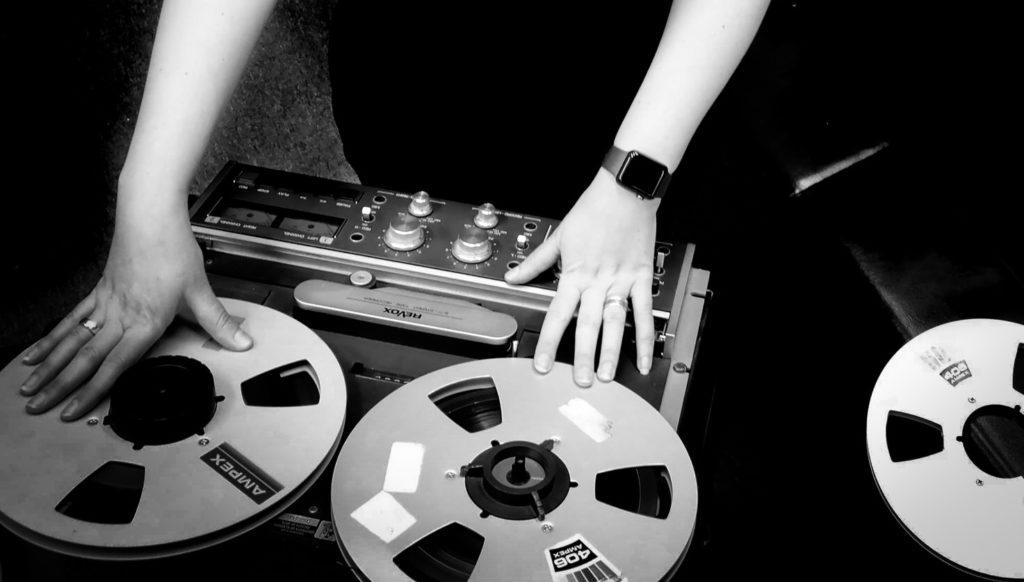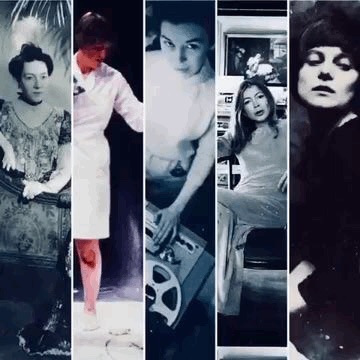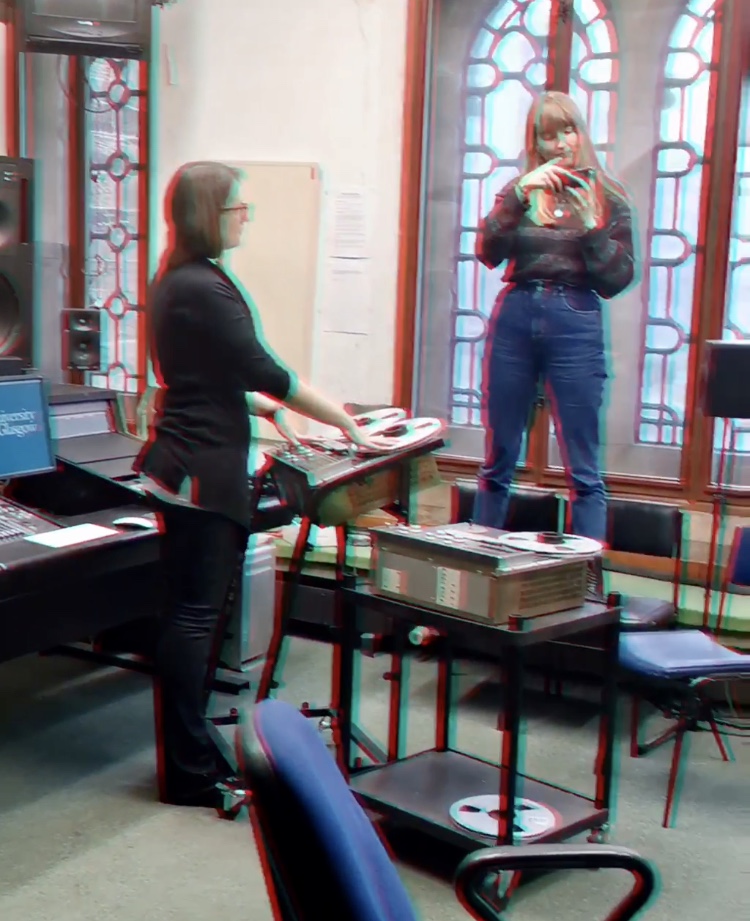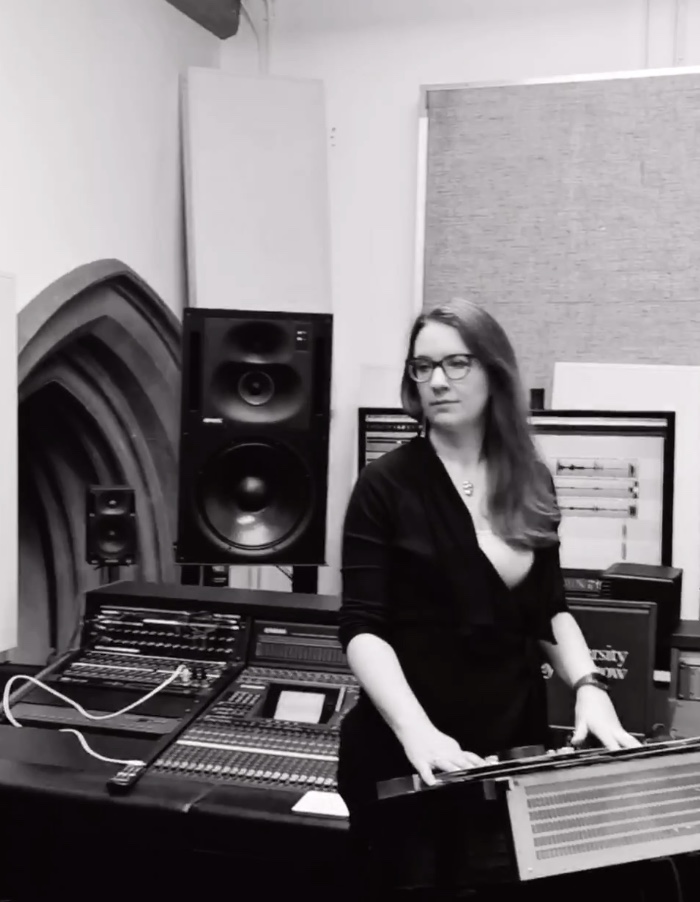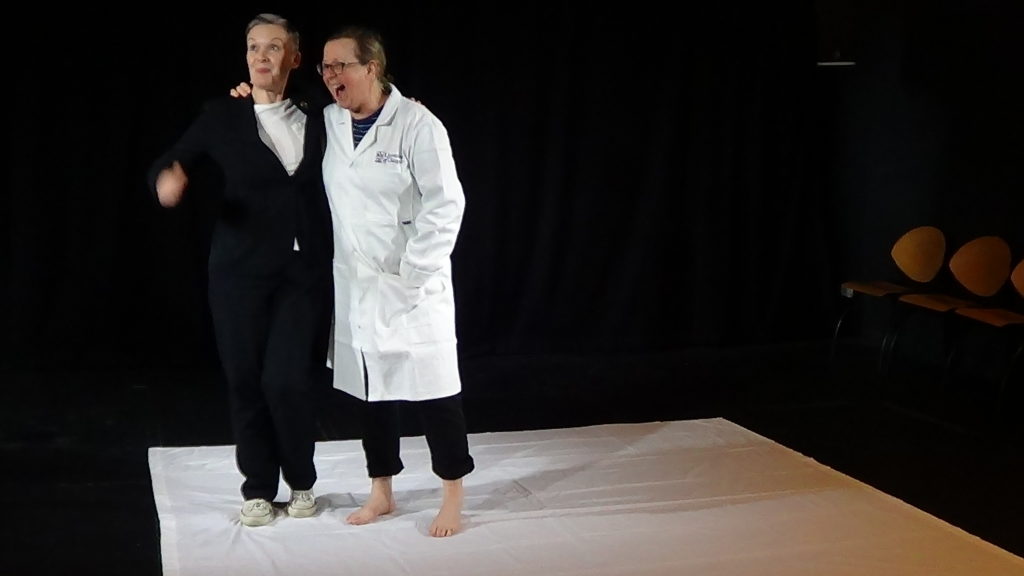
To mark International Women’s Day in 2020, the University of Glasgow recreated a 150 year old photo of male senior academics with women from the university’s community. In the spirit of this, different schools in the College of Arts recreated photos of inspirational women in arts which were nominated by our staff members, using the staff members themselves as the subjects. A tall order perhaps, but there was no shortage of nominations – particularly from the deep pool of creative talent in SCCA. Within days and with limited time and resources our staff subjects effortlessly recreated a group of women with a shared characteristic – their inspirational creativity.
TAKE A LOOK BEHIND THE SCENES ON INSTAGRAM
[1] Dee Heddon as Bobby Baker
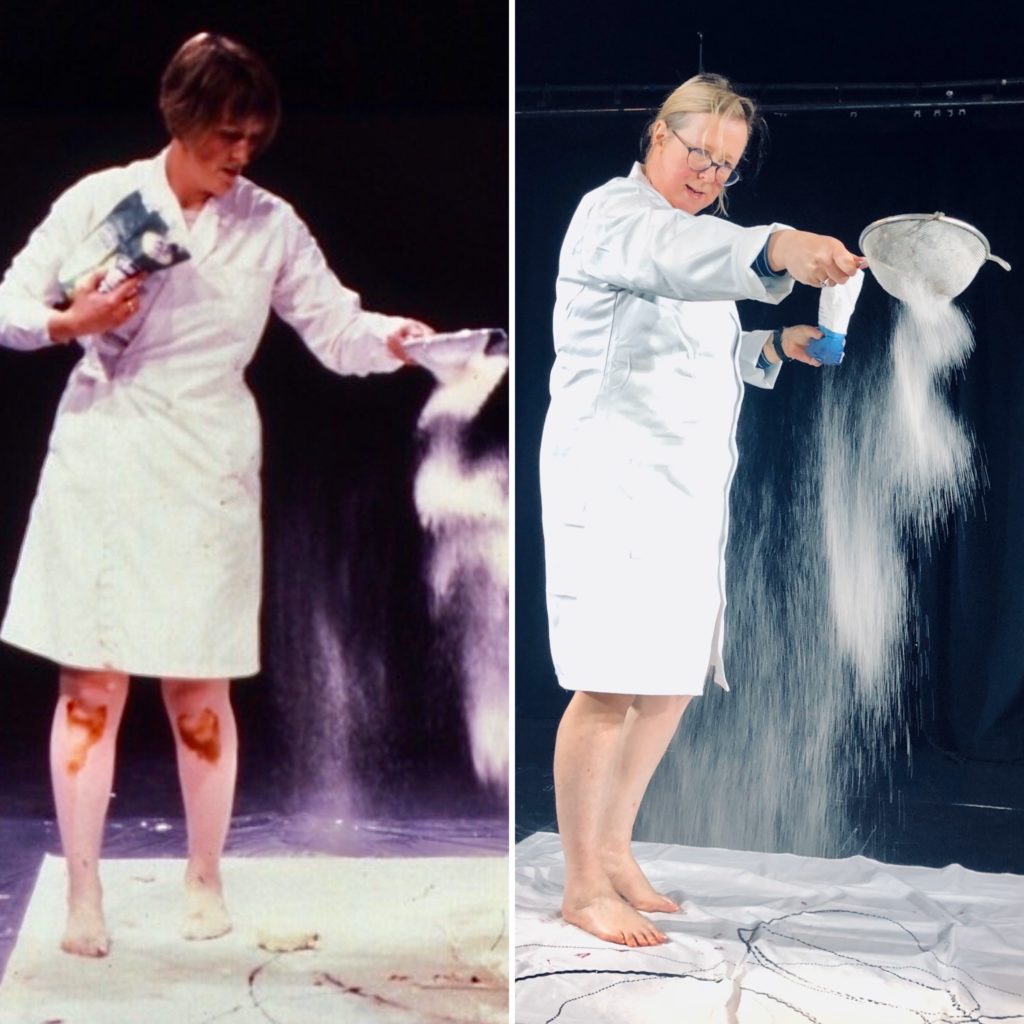
Dee Heddon, Professor of Theatre Studies, nominated Bobby Baker as her inspirational woman in arts. Bobby’s work Drawing on a Mother’s Experience involves the artist using household ingredients like flour, treacle and yogurt to create a bed-sheet canvas of her experience as a mother. Great glugs of treacle lollop to the floor and plumes of flour fill the space as Dee describes the texture and feel of the ingredients underfoot, relating them back to her own experiences. For us working behind the scenes, this shoot was both entertaining and poignant.
Dee on Bobby: ‘I’d like to pay femmage to the artist, Bobby Baker. Her work, Drawing on a Mother’s Experience, appeared in my PhD and it was the performance that got me hooked on autobiography as a form, and which led me to write a monograph about autobiography and performance. It was the first time I’d really seen a woman draw on her personal life, in a political way, and make a performance about it (it was about being a mother and an artist).
There are loads of photos.
I’d need a white sheet and a white lab coat.’

[2] Sally Tuckett as Doris Langley Moore

Sally Tuckett is a dress historian and the convenor of our MLitt Dress & Textile Histories programme.
Sally nominated dress historian Doris Langley Moore for her inspirational woman in arts. Doris was renowned for her collection of historical fashion but also her knowledge and attention to detail when recreating looks from bygone eras, inviting actresses such as Vanessa Redgrave to pose for photos in period gowns. Sally wore her own clothes for the shoot: comfortable and confident in this contemporary femmage.
Sally on Doris: ‘Doris Langley Moore was one of the first female writers working on the history of fashion. At a time when her male counterparts were theorising on how throughout history women dressed to attract men, Moore was collecting and researching surviving garments and used attention to detail to bust various myths about women and dress, most notably the idea that all Victorian women wanted and had an 18 inch waist. As well as her numerous books on the history of fashion, respected works on Byron and contributions to ballet, she also presented the BBC’s first colour television series called ‘Men, Women and Clothes’. Her collection of historical garments eventually found a permanent home at the Fashion Museum at Bath and remains one of the preeminent fashion collections in Britain.’
[3] Louise Harris as Delia Derbyshire

Louise Harris is an audiovisual artist and the convenor of our MSc Sound Design and Audiovisual Practice programme. Louise chose Delia Derbyshire as her inspiring woman in arts. Delia has been called the sculptress of sound and would create sonic landscapes with ‘found sounds’ which she would record onto magnetic tape, copying and splicing with meticulous precision. Delia was the architect of the sound of the iconic Doctor Who theme tune and we used this connection with great aplomb in our behind-the-scenes Instagram story. The excellent photo was taken by our MLitt Theatre & Performance Practices student Natalie Fisher (follow Natalie on Instagram).
Louise on Delia: ‘Delia Derbyshire was a musician, electronic composer and member of the BBC Radiophonic Workshop in the 1960s-70s, where she wrote huge amounts of music and sound effects for plays and TV shows and, most famously, made the electronic realisation of the Doctor Who theme. The composer of that theme was Ron Grainer, but it was Delia Derbyshire who turned it into the extraordinary and evocative sound world that’s now so closely tied to the cultural resonance of Doctor Who. Derbyshire was never credited with the work in her lifetime, though Grainer argued for this, as the BBC preferred members of the workshop to remain anonymous.’
[4] Susan Shaw as Joan Didion
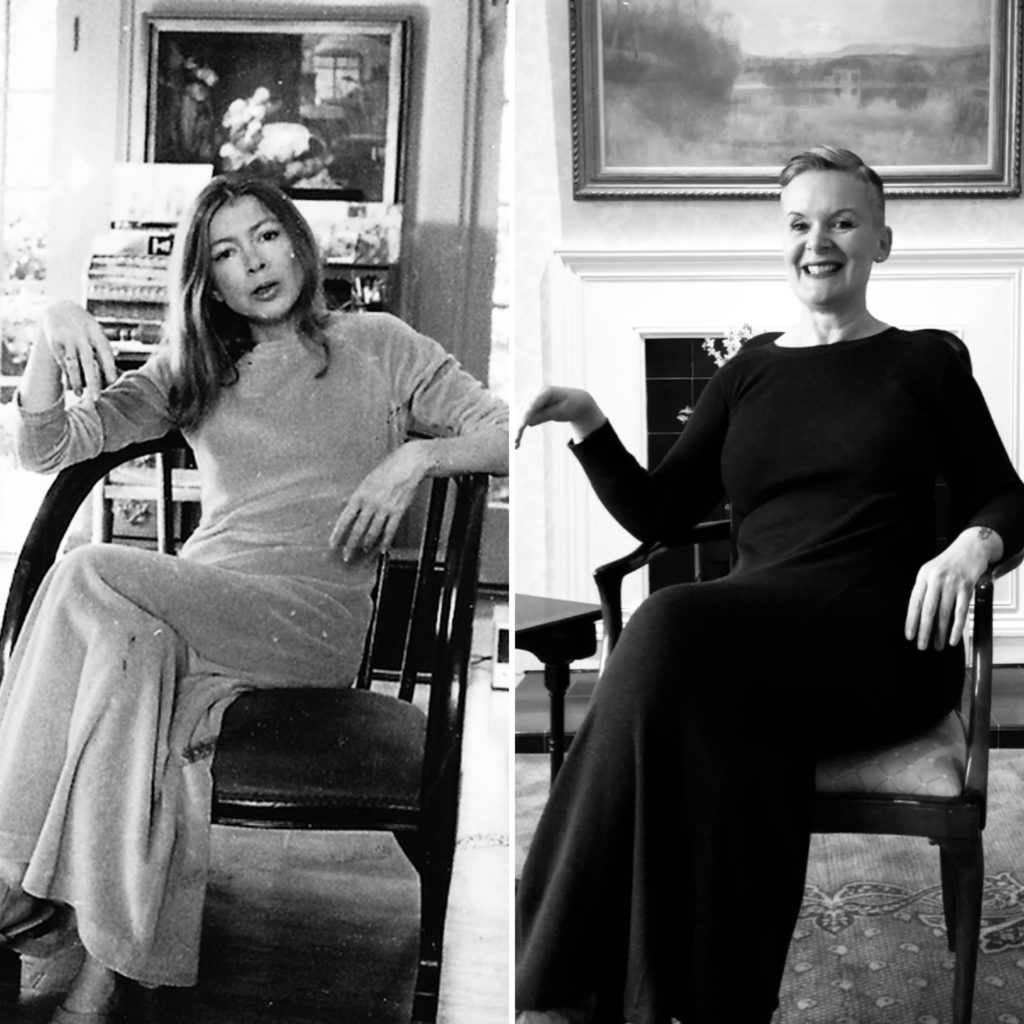
Susan Shaw works on the administrative team in the School of Culture & Creative Arts and is a graduate of the university. Susan chose Vogue journalist and sixties icon Joan Didion as her inspiration. We recreated the photo in lavish style with excellent support from the staff at the Principal’s Lodgings while capturing Joan’s effortlessly bohemian poise.
Susan on Joan: Didion writes with an acute understanding of the American political and cultural landscape, an astute observer of the excesses of the late 1960s. The White Album (1979) is described, as a legendary journey into the hinterland of the American psyche, searching for stories just as the Sixties implode.
Author of five novels and nine books of non-fiction, Didion’s tales are embedded with her signature wit and imagination. The New York Times wrote of Didion: “it is as if some clever editor had assigned Samuel Beckett to write a series of articles on the dazzling blankness of where we live.”
Vogue, where she began her career, working her way up from promotional copywriter to associate feature editor, describes her writing as such: “to read Didion is to understand what writing, at its most exquisitely controlled can do.”
President Obama honoured Didion with the National Humanities Medal in 2013, citing Didion’s influence as: “one of the most celebrated writers of her generation… one of our sharpest, most respected observers of American politics and culture.”
Didion is quoted, as saying: “we tell ourselves stories in order to live.” But, in nephew, Griffin Dunne’s 2017 Netflix documentary: The Center Will Not Hold it took her only two words to describe what she liked the most about The Doors – “Bad Boys!”
[5] Debbie Lewer as Emmy Hennings
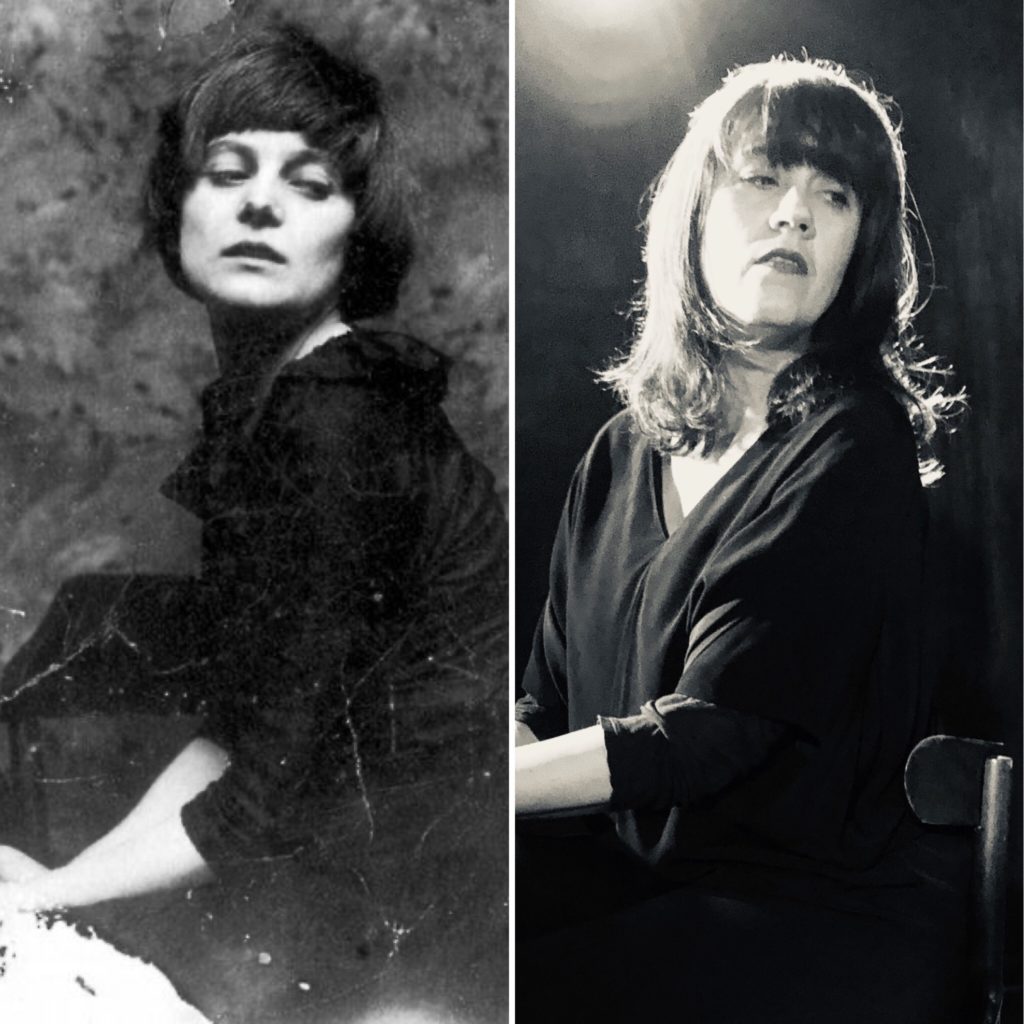
Debbie is an art historian and chose artist Emmy Hennings as her inspiration. We recreated this classic image of the Dadaist Emmy with Debbie by channelling her enigmatic style, basking in the spotlight as though we were on stage at Cabaret Voltaire.
Debbie on Emmy: ‘I’ve chosen Emmy Hennings. To say she was a poet, singer and a famously charismatic performer doesn’t come close to covering all she did in her eventful and sometimes turbulent life. She was almost the only woman to play a significant part in the genesis of Dada, at the Cabaret Volatire in Zurich. She was fiercely original, independent and unconventional – both in her early life as a bohemian in pre-war and wartime Europe, and then as an ardent and reclusive Catholic, with her husband, Hugo Ball, and later as his widow. Photographs of her give a sense of this remarkable woman whose life and work is being appreciated more fully as we move beyond thinking in conventional terms about the avant-garde.’
Enormous thanks to all of our #inspiringwomen for their contributions!



